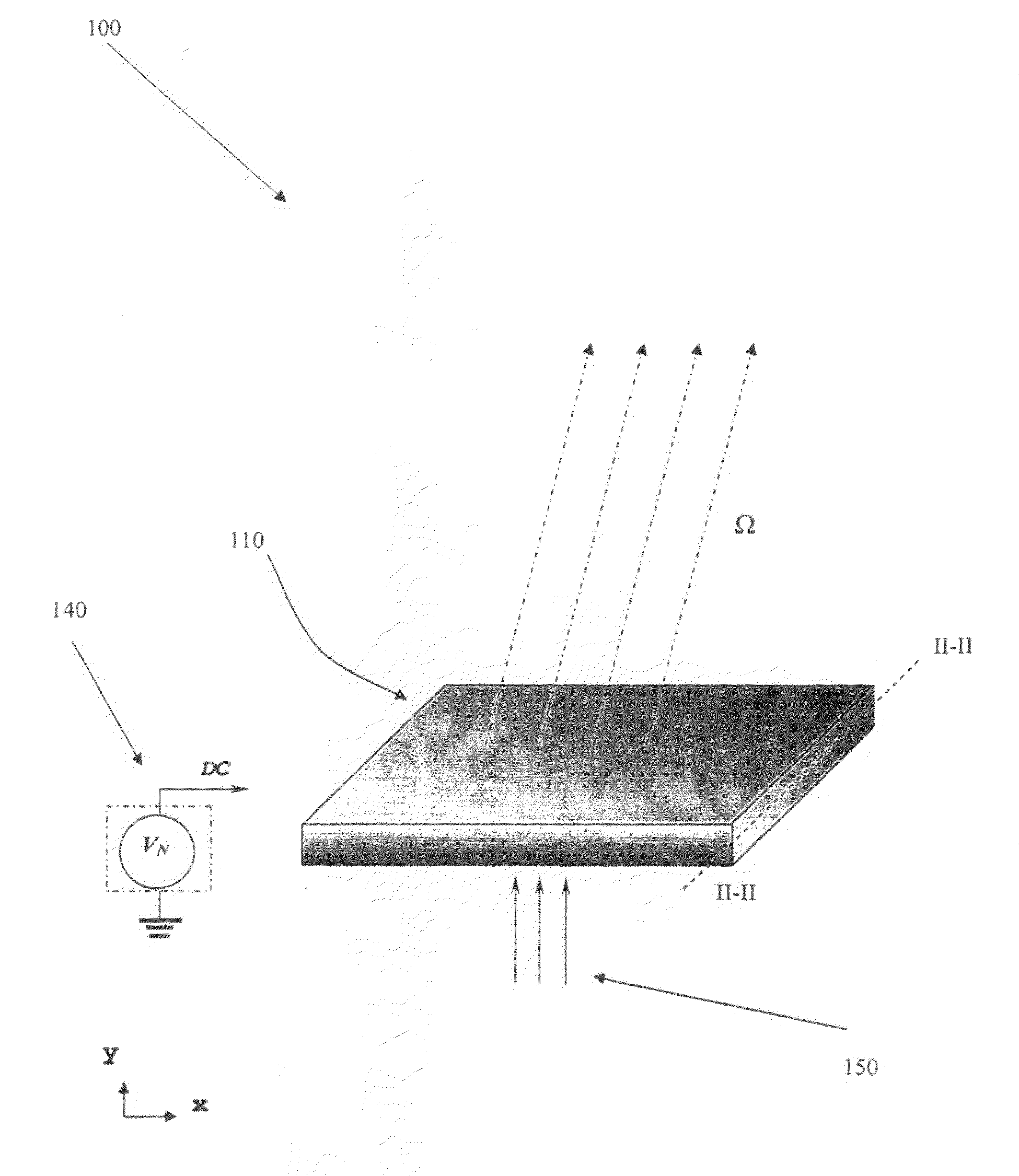Ferroelectric lens
a ferroelectric lens and lens body technology, applied in the field of lenses, can solve the problems of increasing the cost of the device, difficult to fabricate the large-scale (>55 cmsup>2/sup>) plate of the design with acceptable densification and uniformity, and achieves less complex manufacturing, less expensive, and less driving voltage
- Summary
- Abstract
- Description
- Claims
- Application Information
AI Technical Summary
Benefits of technology
Problems solved by technology
Method used
Image
Examples
embodiment 500
[0060]FIG. 5 shows a different embodiment 500 of the invention, by means of which the direction of the exiting electromagnetic beam can be controlled in both the x- and the y-direction, with renewed reference to the coordinate system shown in FIG. 3 and also in FIG. 5.
[0061]As with the previous embodiments, the embodiment 500 is based on a body of ferroelectric material 510. The lens 500 comprises one or several matching transformers at the main surfaces of the body, which is in similarity to the embodiment shown and explained in conjunction with FIGS. 2-4, for which reason the transformers will not be described again here.
[0062]The ferroelectric body 510 is also comprised of a plurality of slabs, 51011-510NN, which in the drawing are shown as rectangular box-like structures arranged as a matrix with N rows and N columns. One of the slabs used in the embodiment 500 is shown in more detail in FIG. 6.
[0063]As with the slabs of the previous embodiment, the slab 510XX shown in FIG. 6 co...
embodiment 700
[0076]One example of an alternative embodiment 700 is shown in FIG. 7: the ferroelectric lens 700 comprises a ferroelectric body 710, with a matching transformer 720, 722, adjacent to each of two main surfaces 707, 708, of the ferroelectric body 710.
[0077]However, as an alternative, the lens 700 has a concave first main surface 707 and a plane second main surface 708, with the respective matching transformers 720, 722, having corresponding shapes. This shape of the components of the lens make it possible to, for example, shape the beam form and / or beam width of the output beam.
[0078]Some examples of materials and dimensions for a lens according to the invention will also be given. It should be pointed out that although these materials and examples are suitable for a lens according to the invention, these are examples only, and should not be seen as restricting the scope of the invention.
[0079]As an example of a suitable material for the ferroelectric slabs of the ferroelectric body,...
PUM
 Login to View More
Login to View More Abstract
Description
Claims
Application Information
 Login to View More
Login to View More - R&D
- Intellectual Property
- Life Sciences
- Materials
- Tech Scout
- Unparalleled Data Quality
- Higher Quality Content
- 60% Fewer Hallucinations
Browse by: Latest US Patents, China's latest patents, Technical Efficacy Thesaurus, Application Domain, Technology Topic, Popular Technical Reports.
© 2025 PatSnap. All rights reserved.Legal|Privacy policy|Modern Slavery Act Transparency Statement|Sitemap|About US| Contact US: help@patsnap.com



